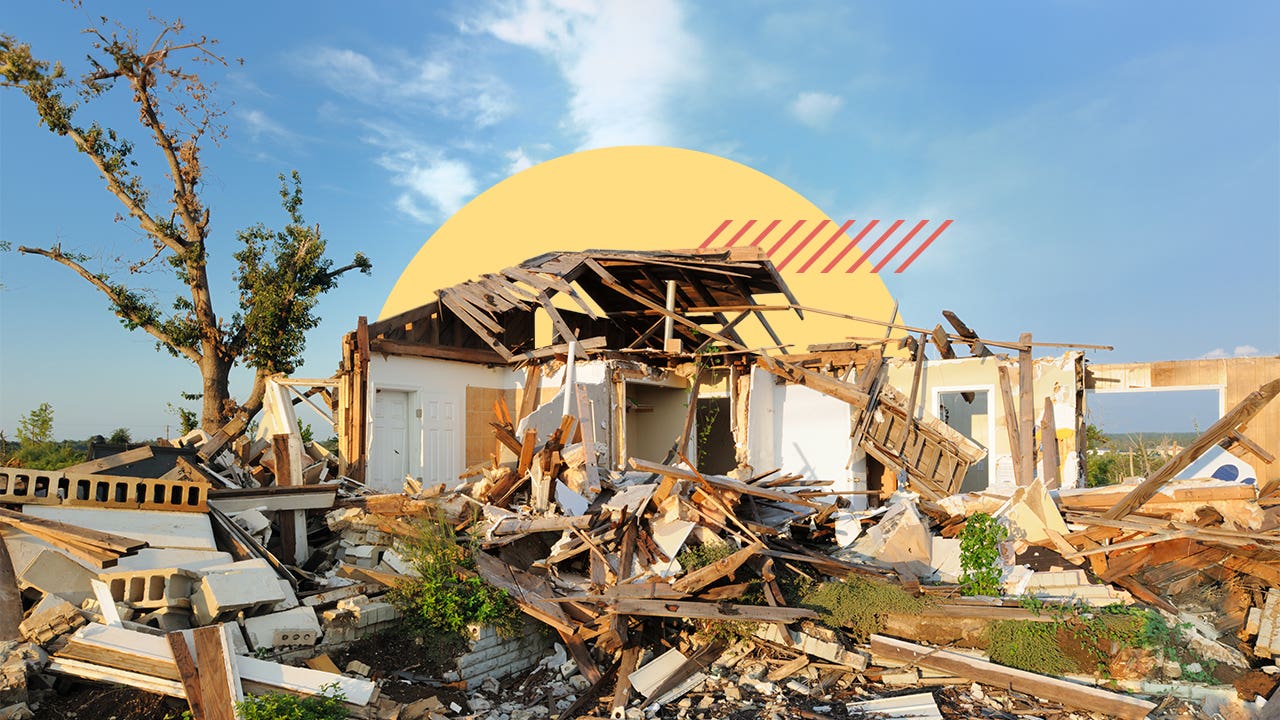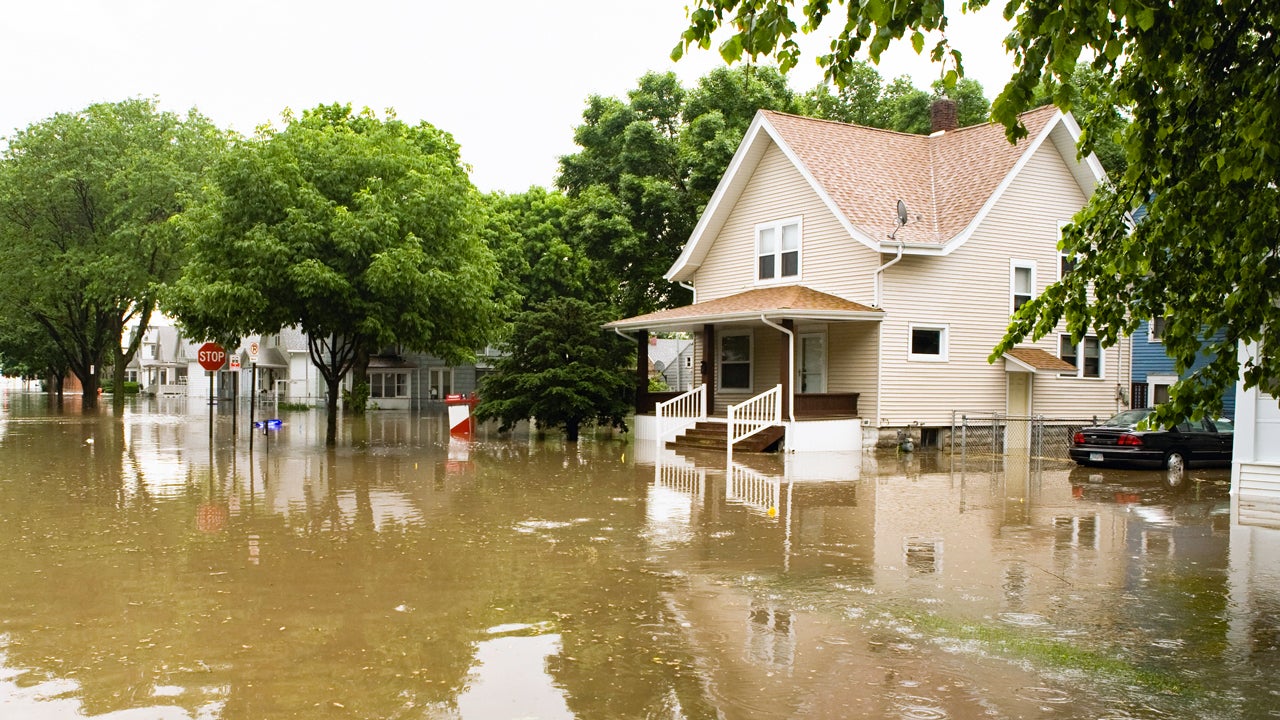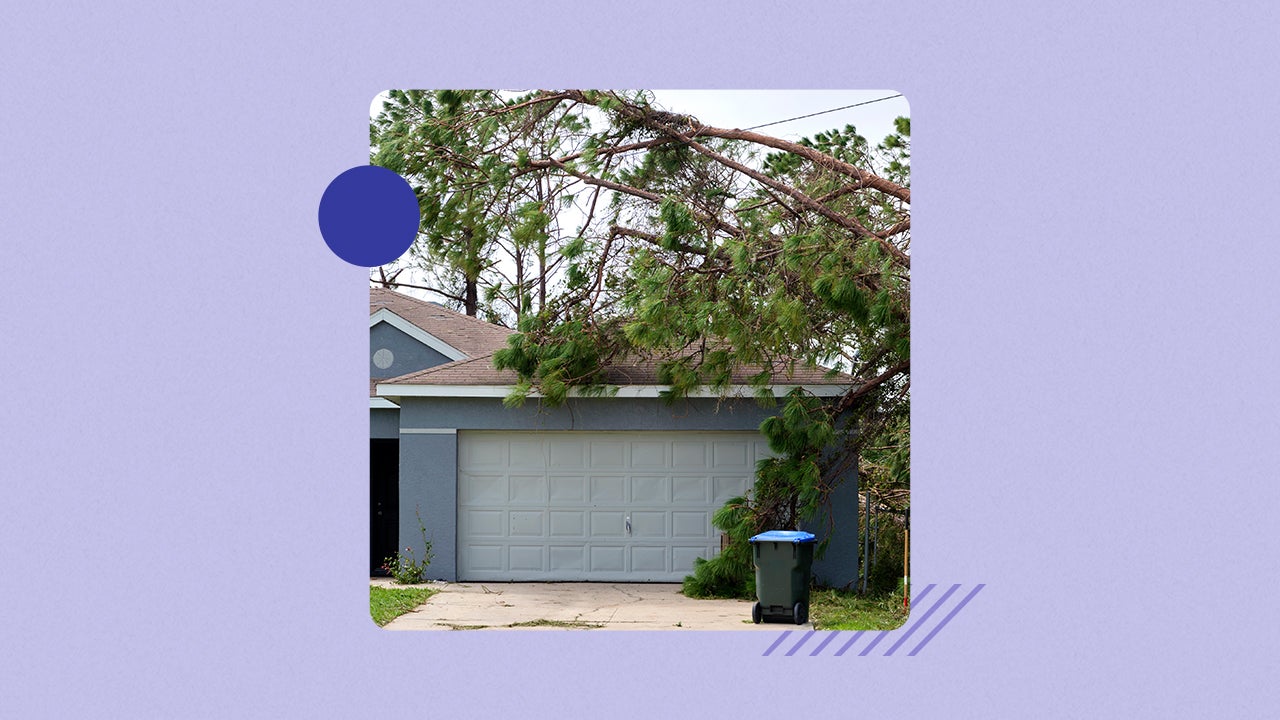6 steps to take after a natural disaster




Key takeaways
- Having an emergency plan, supplies and a thorough understanding of your home insurance policy can help you prepare for a natural disaster.
- Assessing property damage, documenting it and promptly filing a homeowners insurance claim are some potential key steps in the recovery process.
- Common financial impacts of natural disasters usually include property damage, food spoilage and electricity bills.
Experiencing a natural disaster can be frightening and devastating. Wildfires, hurricanes, tornadoes and other severe weather events can cause widespread damage, so what happens after a natural disaster can feel overwhelming. Having a recovery plan and knowing how to start the process of rebuilding can make a difference in how quickly you are able to return to normalcy. When it comes to the damage to your property, Bankrate has created a list of what to do after a natural disaster to help you kick-start the recovery process.
What happens after a natural disaster?
Natural disasters can wreak havoc on the environment and financially burden individuals, families and communities. Understanding the economic implications of these events can be helpful in preparation and recovery efforts.
Financial impact of natural disasters
- Weather-related costs: The majority (81 percent) of U.S. adults have incurred costs in the last 10 years due to extreme weather or paid higher energy bills due to Summer 2023’s extreme heat.
- Costs from extreme weather events: Over half (57 percent) of U.S. adults report incurring costs due to an extreme weather event in the last decade.
- Electricity bill strain: 53 percent of U.S. adults say higher-than-usual electricity bills strained their finances.
- Food spoilage: Among U.S. adults, 23 percent report experiencing financial loss due to spoiled food, such as during a power outage.
- Property damage expenses: Within the last 10 years, 20 percent of U.S. adults have experienced expenses due to home or property damage as a result of extreme weather.
What to do after a natural disaster
Whether you are a first-time homeowner or have lived in your home for decades, it’s important to know what to do if your home is damaged by a natural disaster. Understanding the scope of your home insurance policy may ensure you have adequate coverage to rebuild or repair your home if disaster strikes.
It’s important to be aware that standard homeowners insurance policies have certain exclusions. Most home insurance policies will not cover these types of losses:
- Flood insurance: Flood damage is typically excluded from homeowners insurance, but flood insurance may be available as an endorsement or standalone policy. Homeowners in high-risk areas may be required to carry flood coverage by their mortgage lenders.
- Earthquake coverage: Coverage for earth movement requires an endorsement or a separate policy.
- Other exclusions: Depending on your carrier and location, your policy may have other exclusions. For instance, in certain high-risk counties in Texas, wind damage is not covered by a standard home insurance policy and requires an endorsement or separate policy. Check with your insurer for specifics on your coverage.
Knowing what your homeowners insurance policy covers and what is excluded may be one of the most important steps to take to prepare for a natural disaster. Talking to your agent and reviewing your homeowners insurance policy before disaster strikes might help you feel better prepared.
If you are affected by a natural disaster, you can follow these steps to regain a sense of control and start rebuilding your life.
1. Make sure you and your loved ones are safe
Your first consideration after a natural disaster is the health and safety of you and your loved ones. If you are evacuating prior to a disaster, stay together if you are able. Having an emergency kit for every person in your family and knowing where to locate irreplaceable papers and valuables is essential. You may want to consider keeping them in a fire-safe box in an easy-to-access location.
A battery-powered or hand-cranked radio is an excellent resource to help you locate local shelters and medical care so that you know where to go if you are leaving in a hurry. And do not forget to make a plan for your pets. If it is not safe for you to stay in your home, it is likely not safe for them. However, not all shelters will accept animals, so make a list beforehand of shelters that cater to pets. Just like for your human family members, you should create an emergency kit for pets with food and other necessities.
2. Assess damage
When you are able to safely get back to your home, you will need to assess the condition of your property and see if it sustained any damage. Take a notebook or use the notes app on your phone to keep track of damaged areas. Taking photos may also be a good idea. The type of damage your home could suffer will depend on what kind of natural disaster has happened. Hurricanes are likely to cause roof damage, for example, while earthquakes can cause cracks and damage to your walls or foundation.
3. File a home insurance claim
If your home was damaged in a natural disaster, you may want to file a homeowners insurance claim as quickly as you can. Since there are likely to be a large number of claims, the sooner you file, the sooner you may be able to start repairs.
“When catastrophic disasters occur, you may be prevented from returning home to assess the damage due to safety concerns,” said insurance agent and Bankrate analyst Shannon Martin. “However, you may still want to file your claim immediately. In some situations, insurance companies can issue emergency payments for loss of use coverage, which helps pay for your extra living expenses while your home is under repair.”
Even if you do not know the extent of the damage, you can still call your insurance company or agent to notify them that your home is likely damaged. Your company will assign a claims adjuster to your file who will thoroughly examine the property.
4. Make temporary repairs and find a contractor
Depending on the situation at your property, you may need to make temporary repairs to secure it or eliminate the possibility of further damage. For example, holes in the roof may require you to apply a tarp to keep out rain, or a door blown off its hinges may need to be secured to keep the home safe from thieves. If possible, get several quotes for any necessary repairs, and beware of contractors who suddenly raise their prices while the demand is high or solicit your business by showing up at your home uninvited.
Martin noted a helpful tip: “Have the phone number of a trusted roofer and contractor on hand. As soon as you can, take pictures of the damage and text the images to your contractor. They get booked quickly when disasters strike and losses are concentrated in one area. Texting them right away may help you get priority scheduling.”
If you are going to be away from the home at a shelter or hotel, remove valuable items if you can. Unoccupied homes, even if they are locked, can fall prey to thieves who frequent areas where there has been a natural disaster. Valuable items may also be at risk of damage if flooding occurs during or after the disaster.
5. Keep track of expenses
Handle emergency repairs as soon as you can, but be sure to keep all receipts and invoices that you accrue. Store these in a safe place until your insurer needs them, and discuss any steps you have already taken if an insurance adjuster comes to survey your home.
One thing you can do when preparing for an emergency is to contact your insurance agent to find out if you have coverage for emergency repairs and living expenses while you are not at home.
6. Ask for help if you need it
Natural disasters are stressful and difficult, but you are not alone. Government organizations such as FEMA and nonprofits such as the Red Cross will often set up local centers in your area after a disaster. You may be able to find help with childcare, cleanup and repair costs and mental health support.
Even if your disaster is local and doesn’t meet the criteria for federal support, you might still have options for help. You may be able to seek out local groups that offer support and services after disasters. Support may be offered at the state level, as well.
Resources that could be helpful include disasterassistance.gov, which will direct you to the closest FEMA Disaster Recovery Center (DRC), and the National Center for Missing and Exploited Children, which runs a hotline that can help if you are separated from your child during an emergency. FEMA also has a mobile app that you can download that provides a wealth of real-time disaster information.
Frequently asked questions
-
Your first responsibility after a natural disaster is to make sure that you and your loved ones are safe. Once you have done that, begin the claims process so that it will be handled as quickly and efficiently as possible. You might even be able to file a claim on your insurer’s mobile app. If you are not able to evaluate the damage to your home or you are at a shelter, you may find representatives from your insurer who have been deployed to the area. They can potentially help you start the claims process before you have seen your property.
-
You may be able to protect your home from natural disaster damage to a degree. In areas prone to hurricanes and tornadoes, for example, purchasing a roof that can withstand high winds or fortifying older roofs with hurricane straps may be possible. In areas prone to fires, you may be required by your homeowners association to carefully manage your landscaping to prevent fires from getting close to your home. You could install an automatic sprinkler system in your home to reduce damage from interior fires. And you may be able to mitigate your risk of earthquake damage by working with a contractor to retrofit your home. Understanding the building codes in your area and keeping your home in good condition are typically some of the best defense tactics.
-
There are many variables to consider if you’ve recently lost your home to a natural disaster. The appropriate course of action will be different for everyone. Some things to consider include the cost of rebuilding and the potential for similar disastrous events in the same area. Knowing how much your homeowners insurance will cover and the overall cost of rebuilding is a key part of this decision. Often, it may be more affordable to rebuild rather than buy a different home — but that’s not always the case. Making a list of the pros and cons of your options and speaking with licensed building, insurance and real estate professionals may help you come to an informed decision.
-
According to the Insurance Information Institute, replacement costs escalated 55 percent between 2019 and 2022 due to spikes in construction materials and labor shortages. To avoid insurance gaps if you suffer a loss, experts recommend speaking with a licensed agent and conducting annual insurance checkups to review your policy. Further, if you live in an area where natural disasters are common, you may want to consider replacement cost coverage rather than actual cash value coverage, which does not take depreciation into account. A good rule of thumb is to have enough coverage to rebuild your home, accounting for current construction costs in your area.
-
Your auto insurance may be able to help if your vehicle is damaged during a natural disaster — but only if you carry comprehensive coverage. Comprehensive coverage typically covers vehicle damage that results from something other than a collision (e.g., if your car is damaged in a flood or otherwise damaged by water, wind, hail or fire; if your house or garage collapses on it; or if it is stolen). If you carry comprehensive coverage and your vehicle incurs damage from a natural disaster, you may be able to file a claim.
You may also like

How to prevent your home from flooding

How a personal loan can help you after a natural disaster

How to financially prepare and recover from a natural disaster

